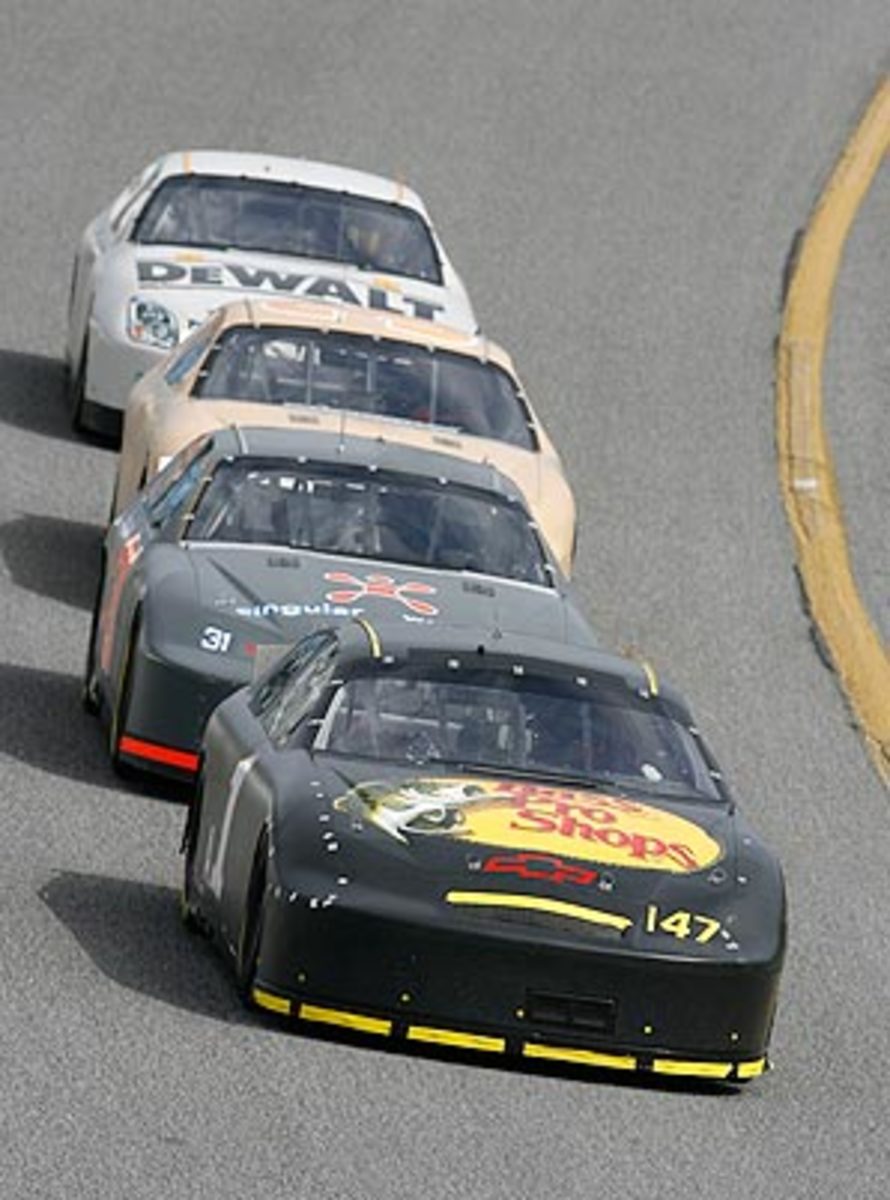
In limiting two-car tandems, NASCAR shows fans have a voice
CONCORD, N.C. -- Amid heavy criticism of the buddy system at Daytona, NASCAR officials believe it's time to bring back the pack in this year's 500.
On Monday, NASCAR vice president of competition Robin Pemberton and Sprint Cup Series director John Darby held an informal competition update at the NASCAR Research and Development Center to outline some of the competition changes for the 2012 season. The pair touched on a variety of subjects, including the implementation of EFI (electronic fuel injection) and the 2013 car, and said that when it came to the 500, the fans have spoken and NASCAR is listening.
According to Pemberton, more than 80 percent of NASCAR fans objected to the two-car tandem style at Daytona, leading NASCAR officials to make a variety of changes.
"In the grand scheme of things our biggest responsibility is to give the most exciting Daytona 500 we can to the fans, and you don't do that by eliminating all the components it takes to put on a good race," Darby said.
Daytona 500 fans have grown accustomed to seeing a large pack of race cars battling over 500 miles and anything that has ventured away from that has been met with bitter criticism.
"There were 40-some percent [of fans] that hated it while another 40 percent wanted to see a mix of styles," Darby said of the two-car tandem. "The biggest thing the fans didn't like about two-car tandems is if I'm a NASCAR fan, I want to see my driver win a race. With tandem racing I can't do that. I can see you push me to victory but I can't win the race by myself.
"The fans want it to be back to one [driver] against 42."
Racing style is often cyclical, but the tandems never caught on with fans, Pemberton said.
"There was a time when they didn't like the pack racing then they watched it and liked it and wanted to go back," Pemberton said. "We've had different types of racing over the years and once the novelty wore off on the two-car tandems it never gained momentum at all."
During last month's preseason test at Daytona, NASCAR teams and officials worked on a variety of rule packages they hope will reduce the duration of the two-car drafts. Radiator inlets were moved up, rear-car angles were adjusted and pressure-relief valve settings were altered. On Monday, they seemed happy with those modifications.
"Are there a lot more adjustments we can make to the cars?" Darby asked. "Not yet. We are not going down to the second page of a menu. We would like to believe we have gone as far as we can. We will watch and see what happens."
The large packs at this year's Daytona 500 will be a treat for the 80 percent of fans who disapproved of two-car drafts, but will the on-track product be markedly more exciting? Darby doesn't think so.
"The debate we can have forever is if you debate the stats from two-car drafting to conventional drafting, two-car drafting has it hands down," Darby said. "[With two-car tandems] we set records every time we ran a race for lead changes and amount of passes and everything you believe would be the most exciting race you ever want. But our fans are unique. They want to see 43 cars battling it out at a time."
And for the small minority of fans that enjoyed two-car drafts, you'll still see them at Daytona, albeit less frequently.
"Our goal was not to eliminate two cars pushing each other entirely because bump-drafting and two cars pushing one another at Daytona and Talladega have been going on since the places were built," Darby said. "What our goal was to change the look of the race back to a more conventional drafting style, which we heard loud and clear from our fans that they liked while not taking away the tool of bump drafting or two cars pushing each other. What we wanted to do was rotate the percentage of use. Instead of the two cars pushing each other being the norm, with a little bit of drafting being the exception, we wanted to flip-flop that."
The other big change for the series will be the debut of EFI in 2012. With a new technological partner in McLaren, NASCAR has left behind the antiquated days of the carburetor to move into the modern era with its engines. And while this has been a major change for a sport that was using an engine platform from the 1950s, the transition has so far been flawless. And while the engineers and teams will see a change, NASCAR is confident the fans won't notice a difference at all on the racetrack.
But at least one NASCAR official is disappointed the fans haven't mentioned the change.
"I'm saddened a little bit that we are going to Daytona and nobody is talking about fuel injection because it was a huge project and has been successful up to this point knowing the winner will be in a fuel-injected car," Darby said. "But that is the way competition is graded a lot of times. When nobody is talking about something we've done then the underlying message to that is all is well.
"We'll take that and head to Daytona. The fans in the grandstands will be very hard-pressed to notice a difference."
And in NASCAR's case if the fans don't object, then the change is actually good.





